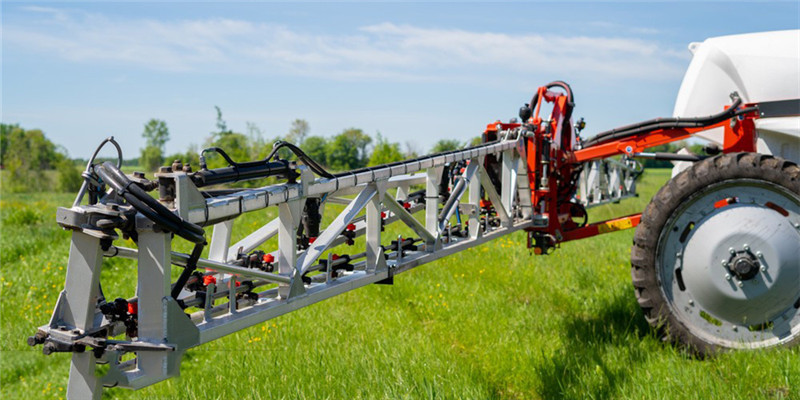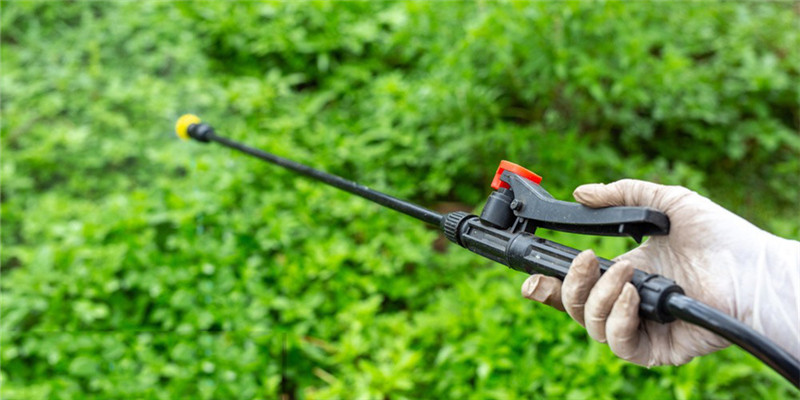When ICI launched paraquat on the market in 1962, one would never have imagined that paraquat would experience such a rough and rugged fate in the future. This excellent non-selective broad-spectrum herbicide was listed in the world’s second-largest herbicide list. The drop was once embarrassing, but with the continued high price of Shuangcao this year and is likely to continue to rise, it is struggling in the global market, but the affordable paraquat is ushering in the dawn of hope.
Excellent non-selective contact herbicide
Paraquat is a bipyridine herbicide. The herbicide is a non-selective contact herbicide developed by ICI in the 1950s. It has a broad herbicidal spectrum, fast contact action, rain erosion resistance, and non-selectivity. And other excellent characteristics.
Paraquat can be used to control pre-planting or post-emergence weeds in orchards, corn, sugarcane, soybeans and other crops. It can be used as a desiccant during harvest and also as a defoliant.
Paraquat kills the chloroplast membrane of weeds mainly by contacting the green parts of the weeds, affecting the formation of chlorophyll in the weeds, thereby affecting the photosynthesis of the weeds, and finally quickly stopping the growth of the weeds. Paraquat has a strong destructive effect on the green tissues of monocot and dicot plants. Generally, weeds can be discolored within 2 to 3 hours after application.
The situation and export situation of paraquat
Due to the toxicity of paraquat to the human body and the potential harm to human health in the process of irregular application, paraquat is banned by more than 30 countries including the European Union, China, Thailand, Switzerland and Brazil.

According to data released by 360 Research Reports, global sales of paraquat in 2020 have fallen to about 100 million US dollars. According to Syngenta’s report on paraquat released in 2021, Syngenta currently sells paraquat in 28 countries. There are 377 companies around the world that have registered effective paraquat formulations. Syngenta accounts for approximately one of the global sales of paraquat. A quarter.
In 2018, China exported 64,000 tons of paraquat and 56,000 tons in 2019. The main export destinations of China’s paraquat in 2019 are Brazil, Indonesia, Nigeria, the United States, Mexico, Thailand, Australia, etc.
Although paraquat has been banned in important agricultural producing countries such as the European Union, Brazil, and China, and the export volume has been relatively reduced in the past few years, under the special circumstances that the prices of glyphosate and glufosinate-ammonium continue to be high this year and are likely to continue to rise , Paraquat, a nearly desperate species, will usher in new vitality.
High prices of Shuangcao promote global demand for paraquat
Previously, when the price of glyphosate was 26,000 yuan/ton, paraquat was 13,000 yuan/ton. The current price of glyphosate is still 80,000 yuan/ton, and the price of glufosinate is above 350,000 yuan. In the past, the peak global demand for paraquat was about 260,000 tons (based on 42% of the actual product), which is about 80,000 tons. The Chinese market is about 15,000 tons, Brazil 10,000 tons, Thailand 10,000 tons, and Indonesia, the United States, and Thailand. Nigeria, India and other countries.
With the banning of traditional medicines such as China, Brazil, and Thailand, theoretically, more than 30,000 tons of market space has been freed up. However, this year, with the rapid increase in the prices of “Shuangcao” and Diquat, and the unmanned market in the United States With the liberalization of machine application, the demand in the U.S. or North American market has increased by about 20%, which has stimulated the demand for paraquat and supported its price to a certain extent. At present, the price/performance ratio of paraquat is more competitive if it is below 40,000. force.
In addition, readers in Southeast Asia generally reported that in areas such as Vietnam, Malaysia, and Brazil, weeds grow rapidly during the rainy season, and paraquat has good resistance to rain erosion. The prices of other biocidal herbicides have risen too high. Farmers in these areas are still There is a rigid demand. Local customers said that the possibility of obtaining paraquat from gray channels such as border trade is increasing.
In addition, the raw material of paraquat, pyridine, belongs to the downstream coal chemical industry. The current price is relatively stable at 28,000 yuan/ton, which is indeed a big increase from the previous low of 21,000 yuan/ton, but at that time 21,000 yuan/ton was already lower than the cost line of 2.4 Ten thousand yuan/ton. Therefore, although the price of pyridine has risen, it is still at a reasonable price, which will further benefit the increase in global demand for paraquat. Many domestic paraquat manufacturers are also expected to benefit from it.
Capacity of major paraquat production enterprises
This year, the release of paraquat production capacity (by 100%) is limited, and China is the main producer of paraquat. It is understood that domestic companies such as Red Sun, Jiangsu Nuoen, Shandong Luba, Hebei Baofeng, Hebei Lingang, and Syngenta Nantong are producing paraquat. Previously, when paraquat was at its best, Shandong Dacheng, Sanonda, Lvfeng, Yongnong, Qiaochang, and Xianlong were among the manufacturers of paraquat. It is understood that these companies no longer produce paraquat.
Red Sun has three plants to produce paraquat. Among them, Nanjing Red Sun Biochemical Co., Ltd. has a production capacity of 8,000-10,000 tons. It is located in Nanjing Chemical Industrial Park. Last year, 42% of the physical products had a monthly output of 2,500-3,000 tons. This year, it completely stopped production. . The Anhui Guoxing plant has a production capacity of 20,000 tons. The Shandong Kexin plant has a production capacity of 2,000 tons. Red Sun’s production capacity is released at 70%.
Jiangsu Nuoen has a production capacity of 12,000 tons of paraquat, and the actual production is about 10,000 tons, which releases about 80% of its capacity; Shandong Luba has a production capacity of 10,000 tons of paraquat, and its actual production is about 7,000 tons, which releases approximately 70% of its production capacity; Hebei Baofeng’s production of paraquat is 5,000 tons ; Hebei Lingang has a production capacity of 5,000 tons of paraquat, and the actual production is about 3,500 tons; Syngenta Nantong has a production capacity of 10,000 tons of paraquat, and the actual production is about 5,000 tons.
In addition, Syngenta has a 9,000-ton production facility in the Huddersfield plant in the United Kingdom and a 1,000-ton facility in Brazil. It is understood that this year was also affected by the epidemic in a state of substantial reduction in production, reducing production by 50% at one time.
summary
Paraquat still has irreplaceable advantages in many countries around the world. In addition, the current prices of glyphosate and glufosinate as competitors are at a high level and the supply is tight, which provides a lot of imagination for the increase in demand for paraquat.
The Beijing Winter Olympics will be held in February next year. Starting from January 2022, many large factories in northern China are facing the risk of suspending production for 45 days. At present, it is very likely, but there is still a certain degree of uncertainty. The suspension of production is bound to further aggravate the tension between the supply and demand of glyphosate and other products. Paraquat production and sales are expected to take this opportunity to get a boost.
Post time: Nov-24-2021



